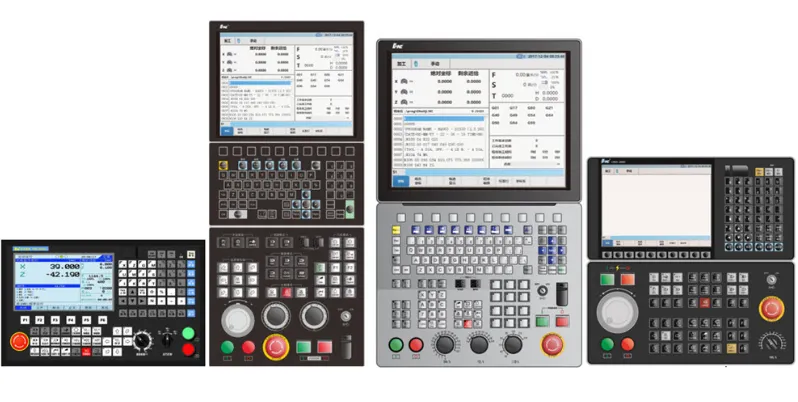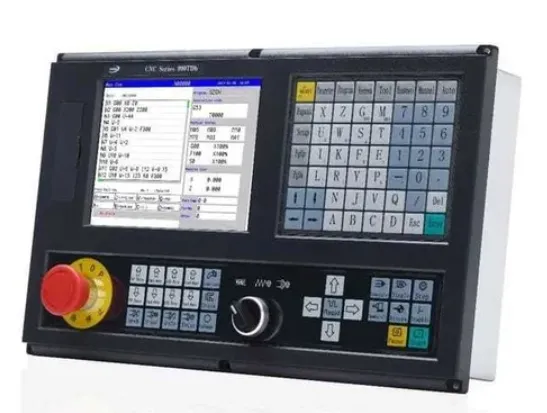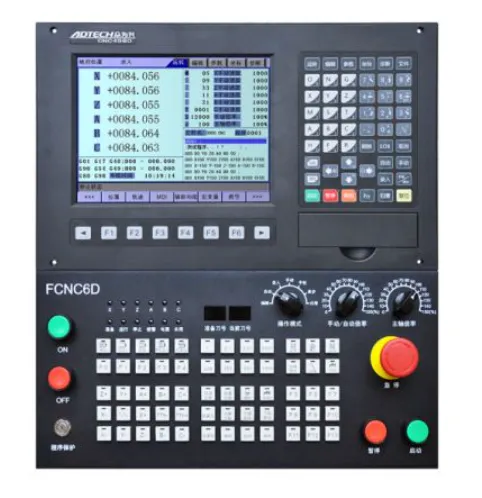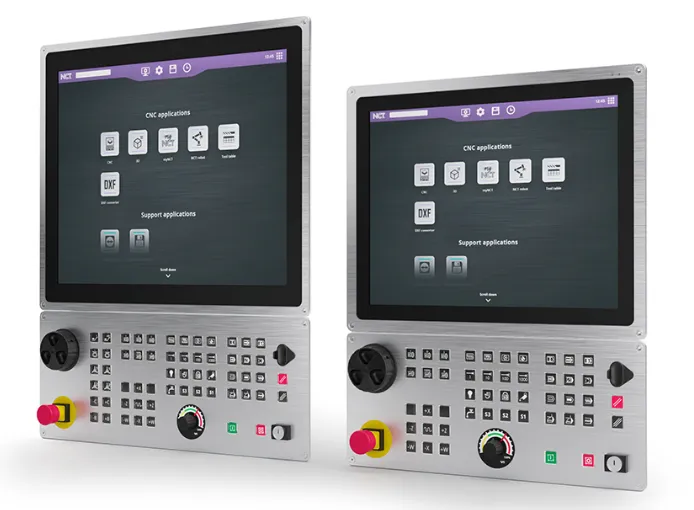CNC control systems serve as the operational nexus between digital design and physical machining, translating complex geometric data into precise mechanical motions with micron-level accuracy. These sophisticated computer-based platforms manage all aspects of machine tool operation, from axis movement coordination to spindle speed regulation and auxiliary function activation. Modern CNC controllers process millions of instructions per second using specialized real-time operating systems that guarantee deterministic response times under 1 millisecond for critical functions like emergency stops or collision avoidance. The control architecture typically incorporates multiple processor cores – one dedicated to trajectory planning that calculates position commands 50-100 blocks ahead of execution, while others handle servo loop closure at frequencies exceeding 10 kHz for sub-micron positioning accuracy. Advanced interpolation algorithms enable smooth multi-axis motion, with contemporary systems capable of synchronizing up to 32 axes simultaneously while maintaining synchronization errors below 0.001 degrees in rotary axes or 0.5 microns in linear axes. This computational power supports complex machining operations such as NURBS interpolation for die/mold surfaces or adaptive feed rate control that automatically adjusts cutting speeds based on real-time spindle load monitoring.
 The human-machine interface (HMI) component of CNC control systems has evolved from simple text-based displays to sophisticated graphical workstations featuring high-resolution 3D visualization of toolpaths, virtual machine environments, and augmented reality overlays for setup assistance. Modern HMIs present operators with contextual data including: predictive maintenance alerts derived from vibration analysis (typically monitoring frequencies between 50Hz-5kHz), tool life management statistics tracking remaining useful life based on cutting time and load history, and energy consumption metrics broken down by machine subsystem. Touchscreen interfaces now dominate, with multi-touch gestures enabling intuitive manipulation of complex part programs that may contain over 100,000 lines of G-code. The increasing adoption of web technologies allows remote monitoring through standard browsers, with secure VPN connections providing real-time access to machine status from any location. Some advanced controllers incorporate natural language processing, allowing voice commands for common functions like tool changes or program searches, significantly reducing operator interaction time during production runs.
The human-machine interface (HMI) component of CNC control systems has evolved from simple text-based displays to sophisticated graphical workstations featuring high-resolution 3D visualization of toolpaths, virtual machine environments, and augmented reality overlays for setup assistance. Modern HMIs present operators with contextual data including: predictive maintenance alerts derived from vibration analysis (typically monitoring frequencies between 50Hz-5kHz), tool life management statistics tracking remaining useful life based on cutting time and load history, and energy consumption metrics broken down by machine subsystem. Touchscreen interfaces now dominate, with multi-touch gestures enabling intuitive manipulation of complex part programs that may contain over 100,000 lines of G-code. The increasing adoption of web technologies allows remote monitoring through standard browsers, with secure VPN connections providing real-time access to machine status from any location. Some advanced controllers incorporate natural language processing, allowing voice commands for common functions like tool changes or program searches, significantly reducing operator interaction time during production runs.
At the hardware level, CNC control systems interface with machine components through robust industrial networks employing protocols like EtherCAT, PROFINET, or Powerlink that achieve cycle times under 250 microseconds for deterministic communication. Servo drives receive position commands via these networks while providing continuous feedback through high-resolution encoders – absolute optical encoders with 24-bit resolution (16 million counts/revolution) becoming standard on precision machines. The control processes this feedback in closed-loop systems, applying PID (Proportional-Integral-Derivative) algorithms with auto-tuning capabilities that compensate for mechanical variations like backlash or thermal growth. Safety-rated components meeting SIL 3/PLe standards handle critical functions through redundant circuits, including safe torque off (STO) for spindles and safe limited speed (SLS) for axes. Power electronics have advanced to support intelligent energy management, with regenerative drives converting braking energy from axis deceleration back into usable power, reducing total energy consumption by 15-25% compared to traditional resistor-based systems.

Programming methodologies for CNC controls have progressed significantly from basic G-code input. Contemporary systems support multiple programming paradigms including: ISO standard G-code (with machine-specific extensions), conversational programming for simpler parts, and direct CAD/CAM integration where toolpaths are generated from 3D models without intermediate code. Advanced controls implement high-level language features similar to modern programming environments – variables, conditional statements, loops, and subprograms enable parametric programming that adapts to varying workpiece conditions. The emergence of STEP-NC (ISO 14649) represents a paradigm shift, replacing traditional G-code with a feature-based format that includes geometric tolerances, surface finish requirements, and inspection criteria within the program itself. Simulation capabilities have become integral to CNC controls, with physics-based models predicting cutting forces (typically accurate within 5-10% of actual values), tool deflection, and even workpiece vibrations before machining begins. Some systems now incorporate machine learning algorithms that analyze historical data to optimize feed rates and spindle speeds automatically, improving tool life and surface finish while maintaining productivity.

The integration of CNC controls with broader manufacturing systems has created networked production environments where machines operate as intelligent nodes rather than isolated units. OPC UA (Open Platform Communications Unified Architecture) provides standardized data exchange between CNC equipment and factory-wide monitoring systems, transmitting hundreds of parameters including: axis following errors (typically maintained below 5 microns during contouring), spindle load (as percentage of maximum torque), and coolant pressure (commonly 10-70 bar for high-pressure systems). Cloud connectivity enables centralized tool management databases that track usage across multiple machines, predictive maintenance systems that analyze vibration trends to forecast bearing failures, and remote diagnostics that allow OEM technicians to troubleshoot problems without onsite visits. The Industrial Internet of Things (IIoT) has introduced new capabilities like digital twins that mirror physical machine behavior with 95%+ accuracy, enabling virtual commissioning and process optimization before actual production begins. Cybersecurity has become a critical concern, with modern CNC controls incorporating hardware-based encryption, role-based access control, and continuous intrusion detection to protect against threats in connected manufacturing environments.

Application-specific CNC control configurations address unique industry requirements. For high-speed machining (HSM) of aluminum aerospace components, controls implement look-ahead algorithms processing 500-1000 program blocks in advance to optimize acceleration profiles, maintaining chip load within 0.05-0.15mm/tooth at feed rates reaching 20,000mm/min. Turning centers employ specialized controls with C-axis synchronization for live tooling operations, coordinating spindle rotation with milling cutter position within 0.01 degree accuracy. Grinding machine controls incorporate adaptive dressing cycles that compensate for wheel wear based on in-process gaging data, maintaining size tolerance within ±1 micron over production runs. Multi-tasking machines combine turning and milling controls with synchronized axis management, enabling complete part machining in single setups with feature relationships held within 5-10 microns. The medical industry utilizes micro-machining controls capable of nanometer-resolution positioning for implant surface texturing, while the automotive sector relies on high-volume production controls that minimize non-cut time through optimized tool change sequences (often achieving chip-to-chip times under 2 seconds).
Emerging technologies are reshaping CNC control capabilities in fundamental ways. Edge computing brings processing power directly to machine tools, enabling real-time analytics that detect tool wear patterns or process anomalies within milliseconds. Artificial intelligence applications now automate previously manual tasks like fixture offset determination or collision zone definition, reducing setup time by 30-50%. Augmented reality interfaces overlay setup instructions or inspection data directly onto the physical machine view through head-mounted displays. Quantum computing research promises to revolutionize toolpath optimization, potentially solving complex nesting problems in seconds that currently require hours of computation. Adaptive control systems are evolving beyond simple load monitoring to incorporate multi-sensor fusion – combining acoustic emission data, infrared thermography, and even machine vision feedback to make real-time process adjustments that improve quality and productivity simultaneously. These advancements ensure CNC control systems will continue driving manufacturing innovation while maintaining backward compatibility with decades-old machine tools, bridging the gap between legacy equipment and smart factory requirements.

The future trajectory of CNC control development focuses on increasing autonomy while maintaining the precision that has defined numerical control since its inception. Self-configuring systems that automatically determine optimal machining parameters based on material analysis and desired outcomes are entering industrial use. Distributed control architectures allow single controllers to coordinate multiple machines as unified systems, particularly beneficial for production lines with interdependent processes. Standardization efforts aim to create universal programming interfaces that work across machine tool builders, reducing the need for operator retraining when introducing new equipment. As manufacturing moves toward lot-size-one production, CNC controls are developing the flexibility to handle constant variation while maintaining quality standards – a challenge addressed through real-time quality verification and automatic process adjustment. This ongoing evolution ensures CNC control technology remains at the heart of precision manufacturing, adapting to new materials, processes, and business models while continuing to deliver the accuracy and reliability that modern industry demands.




